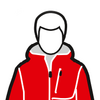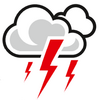Breathe in the fresh mountain air, delight in the panoramic views, exercise the body: hiking in the mountains and climbing via ferratas are currently on trend. Stunning landscapes, an excellent network of hiking trails and well-equipped via ferratas invite outdoor lovers to explore our beautiful country on foot. However, being out and about in Alpine terrain demands a high degree of self-responsibility, the ability to assess one’s own capabilities, and a keen awareness of potential dangers. Whether for a hiking trail or a via ferrata – thorough preparation is essential. In particular, you should make sure that you know your exact route and the conditions along the way. Hiking paths, mountain trails and Alpine routes demand different levels of ability. For via ferratas, too, the grades of difficulty vary from one region to another. Therefore, find out about the degree of difficulty and the demands of your chosen via ferrata in advance.
Careful planning is a must
Pay attention not only to the rough indications of difficulty, but also to other criteria, such as altitude differences, exposure to the elements or, in the case of via ferratas, the time it takes to reach and climb them. Allow yourself plenty of time, including for breaks. Also take into account the time of year, the openness of the chosen route and the weather: you can find out more about current conditions from websites and webcams, at cable car stations, from hut wardens or by talking to the locals.
Do the test
Overdoing things increases the risk of accidents and makes your hike less enjoyable. Be realistic about your own abilities and plan accordingly. If you are hiking with other people, remember that the weakest member of the group determines the pace and the level of difficulty. Not sure which hiking routes are suitable for you? The Swiss Council for Accident Prevention (bfu) and the Swiss Hiking Federation have published a self-test.
Climb the via ferrata safely
What applies to mountain hikes naturally applies all the more to via ferrata climbing, especially as it is usually difficult or even impossible to go back once you have started. The Swiss Alpine Club SAC has therefore compiled ten recommendations for climbing a via ferrata safely, which are published together with some useful information leaflets on its website.
Well-equipped
Safety has a lot to do with equipment. Stumbling and slipping are the most common causes of accidents when hiking in the mountains. Make sure you wear sturdy hiking boots with non-slip soles that have a good grip and are appropriate for the route. Take with you protection against the sun and rain, as well as warm clothing – the weather can change very quickly in the mountains. Even in this digital age, an up-to-date hiking map belongs in your backpack. Remember to pack a first-aid kit, a rescue blanket, provisions and a mobile phone for emergencies. If you will be tackling via ferratas, a climbing helmet, harness, via ferrata set and special leather gloves should also be part of your basic equipment.
Turn back in good time
Tiredness can seriously affect how surefooted you are. Drink, eat and rest regularly to keep up your strength and remain focused. Also pay attention to your time plan and the weather conditions. If the weather deteriorates, turn back in good time or seek shelter. Have you lost your way? Stay together as a group, return to the last known point and, if necessary, get help. Do not take risks and do not overexert yourself. Always turn back in good time.
If you need Rega’s help
Despite every precaution, things sometimes just happen – and Rega’s assistance is needed. For in Alpine terrain, even a relatively harmless injury can quickly turn into an emergency. And if you find yourself in difficulties on the via ferrata or have lost your way, it makes good sense to contact Rega in good time. Perhaps we can even help you without dispatching the rescue helicopter. In short: do not hesitate to ask for help in an emergency situation. The best way to do so is via the Rega emergency app. Then your precise coordinates are transmitted directly to the Operations Centre and the Rega helicopter crew will know exactly where to find you. Of course, you can also alert Rega by calling the emergency number 1414. If no mobile service is available where you are, change your location – sometimes, moving just a few metres is enough to get a signal again.






